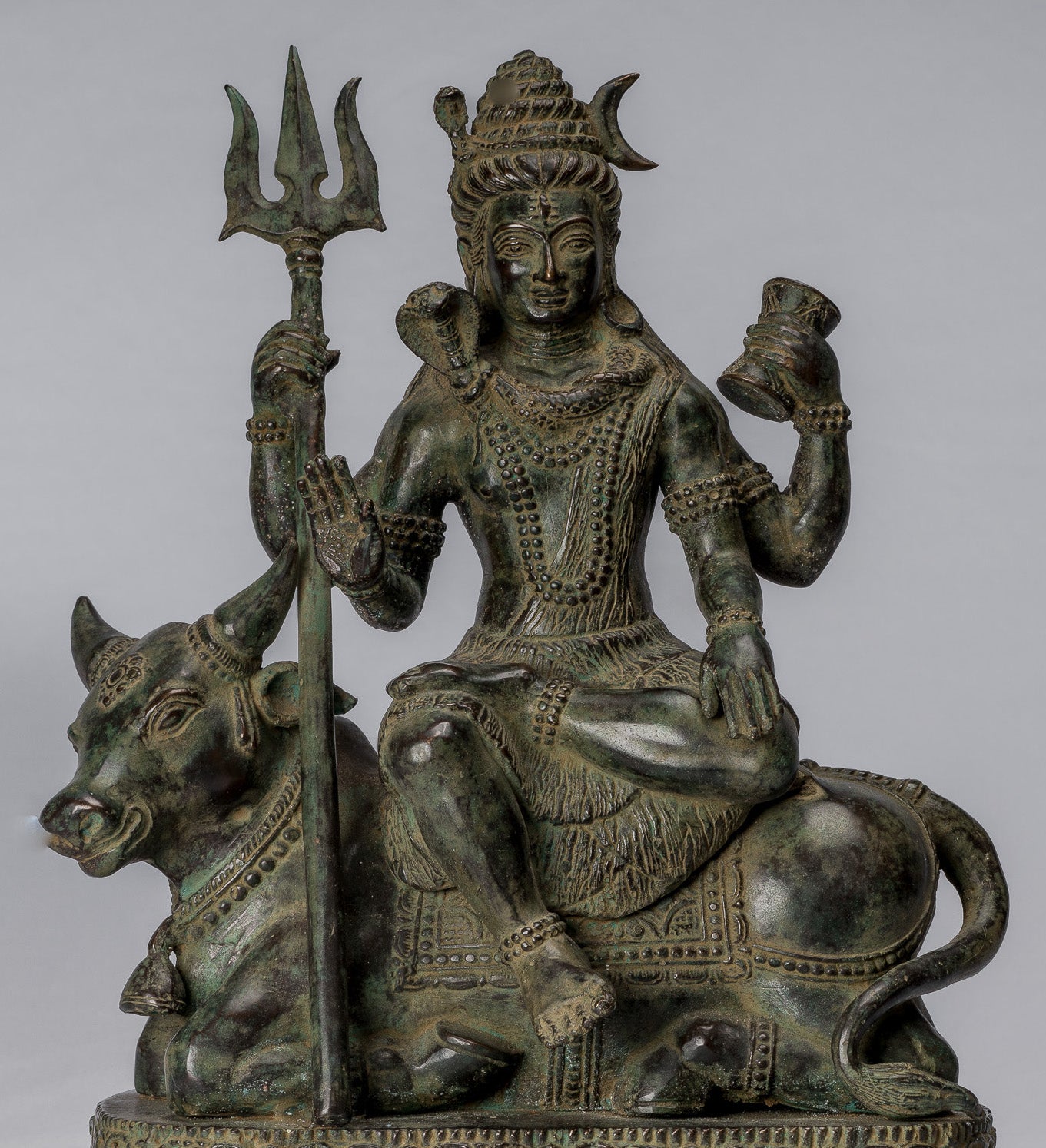-
Antique Chinese Style Seated Bronze Adoration Buddha - 34cm/14"
Measures (Height) 34cm/14"
A seated Chinese Buddha in adoration pose.
The Adoration Mudra, also known as the Anjali Mudra, with the Buddha’s hands held together in a prayer-like position, signifies reverence, respect, and devotion.
The Adoration Mudra, or Anjali Mudra, involves pressing the palms together in front of the chest, with fingers pointing upwards and the thumbs close to the heart. This gesture is accompanied by a slight bow of the head, emphasizing humility and respect.
The Adoration Mudra has ancient roots in Indian culture and spirituality, predating Buddhism. It is widely used in Hinduism, Jainism, and other Indian traditions as a sign of greeting, respect, and devotion. In Buddhism, it was adopted to convey similar sentiments, reflecting the interconnectedness of these spiritual traditions.
In meditation and mindfulness practices, the Adoration Mudra can be used to cultivate a sense of reverence and focus. By bringing the palms together and centering them near the heart, practitioners create a physical reminder of their spiritual intentions, helping to center the mind and deepen the meditative experience.
The Buddha is seated on a lotus leaf base, decorated with many Buddha in the Enlightenment pose, in the cross-legged yogic, adamantine posture of vajraparyankasana, the right leg over the left, with the soles of both feet facing upward.
The lotus flower represents the attaining of enlightenment and the ultimate fulfilment that follows. This symbol is heavily used in Eastern religions, which is why it can appear as both a held item or a seat. Some say that as the lotus flower grows in dirty water but becomes something beautiful, it demonstrates how we must forget our attachments to the material world around us and focus on our inner spirituality in order to seek happiness.
His robe is draped over both shoulders and is also decorated with many Buddha, in the meditation pose. The lower hem of the robe comes all the way down so that the under-cloth or skirt is completely covered.
Mandalas can be seen on the soles of his upturned feet, symbol of meditation and serenity.
In various spiritual traditions, mandalas can be used to focus the attention of practitioners and adepts, as a spiritual guidance tool, for establishing a sacred space and as an aid to meditation. In the Eastern religions of Hinduism, Buddhism, Jainism and Shinto it is used as a map representing deities, or especially in the case of Shinto, paradises, kami or actual shrines.
A mandala generally represents the spiritual journey, starting from outside to the inner core, through layers.
His hair is formed of tight curls that form a large ushnisha protuberance on top of his head symbolising his high level of spiritual development. His earlobes are stretched long from a youth spent as a prince wearing heavy gold earrings.
The Buddha with his hands held in the Adoration Mudra is a powerful symbol of reverence, unity, devotion, and humility. This gesture encapsulates key aspects of Buddhist teachings and serves as a reminder for practitioners to cultivate these qualities in their own lives.
Whether in meditation, ritual, or daily interactions, the Adoration Mudra provides a meaningful way to connect with the deeper principles of Buddhism and to embody the path of enlightenment with sincerity and grace.
The casting is beautiful as you can see in the fine details of the face. Each detail is rendered perfectly. The distinctive patina of the piece is also particularly delightful. He holds his hands clasped together in the adoration pose.
SATISFACTION GUARANTEE - We have been offering SE Asian Art for many years and are proud of the reputation we have developed for fair and honest listings. However, if for any reason, whatsoever, you are unhappy with your purchase please just let us know and we will provide a full refund. We want you to be 100% happy with your purchase.
-
The majority of orders will be shipped with DHL. This is a secure, express and fully tracked service.
Items less than 2Kg we typically ship using Royal Mail.
Once we receive your order we try to ship all orders the same or next working day.
Large and/or fragile pieces requiring palletising, specialist crating and/or extra packaging may take a little longer. Palletised shipments will be delivered curbside.
All orders over 35 GBP will be shipped free of charge.

-
We genuinely hope that all purchases delight.
However, if they do not, regardless of reason, we will refund all orders upon receipt of the unwanted item. Just notify us within 14 days of receiving your order that you wish to make a return and send the piece back to us with 30 days of delivery.
The connection between Shiva and his mount Nandi is a profound and multi-layered symbol in Hinduism.
Nandi is not just a mere vehicle for Shiva; he is a symbol of devotion, strength, and purity—qualities that complement and enhance Shiva’s transformative power.


































